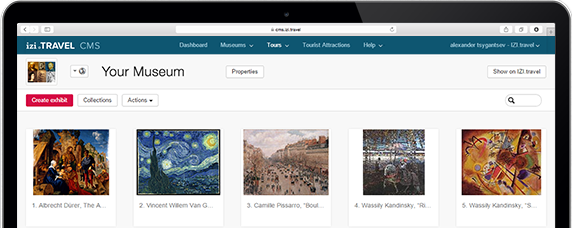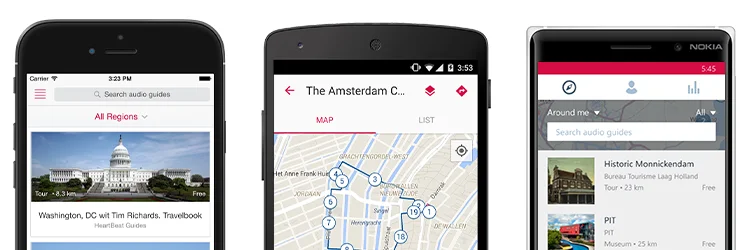Áudio tour Hall 2. Archeology
- Baixar o app
- iOS
- Android
- Windows Phone
Welcome to the hall of archeology!
Hall of Archeology tells about the evolution of human. Archeology developed its own periodization, according to which the history of mankind is divided into the era of stone, bronze, iron and medieval. In turn, each of these eras is divided into periods and cultures.
The exposition starts with an archaeological map of the East Kazakhstan region and brief information about the types of archaeological monuments found in the region.
Physical and geographical features of the region created favorable conditions for the life of an ancient people who appeared on the territory of this region about 140 thousand years ago. The first settlement of people in the East Kazakhstan region occurred along the Irtysh River, as well as large bodies of water, such as Lake Alakol and Sasykkol, the most ancient camps of people are located there. Since the people of that time were engaged in hunting and gathering, therefore, they moved further as the natural resources of their habitat were depleted. And they followed the moving herds of wild animals.
Today the Kozybai location, discovered in 1989, is considered to be the most ancient monument in the territory of East Kazakhstan.
At the beginning of II millennium BC on the territory of Kazakhstan, a complex economy, connecting cattle breeding, agriculture and highly developed metallurgy has developed. The age of bronze on our territory is the time of exclusive use of bronze and copper tools. Bronze is an alloy of copper and tin, so this era received its name - the Bronze age.
In East Kazakhstan, the Bronze Age largely coincides with so-called "Andronovo culture." Bronze tools continued to be used here and at the first stage of the next historical period - the era of early nomads, which is explained by exceptionally favorable natural conditions - numerous copper and tin deposits. Mining and metallurgy played a major role in the life of the Andronovo tribes. Kazakhstan due to the huge amount of minerals in the Bronze Age became one of the centers of mining.
The tribes that inhabited the territory of Kazakhstan in the Bronze Age left archeological monuments (settlements, burial grounds, mines, rock paintings), which belong to the Andronovo archaeological culture (the name is given after the first excavations of the burial ground near Andronovo village in Southern Siberia). The excavations here were carried out in 1913. In 1927, archaeologists discovered similar burials in western Kazakhstan and found that the memory of the Andronovo culture is widespread in the vast territory. Later Andronovo monuments were found in the south of Kazakhstan and in Central Asia.
In East Kazakhstan dozens of the Bronze Age settlements and tombs were found, their development was influenced by the richest deposits of copper, tin and gold.
The ornament on vessels was not just a decoration - it had a magical character, protecting the contents of vessels from the "evil eye" and "whammy", also it symbolized wealth, abundance of the content.
Rock paintings of the Bronze Age are peculiar. Kazakhstan is one of the richest places in terms of the number and variety of petroglyphs.
The Iron Age came to replace the Stone and Bronze Age, since the main tools were made of iron. Iron tools were sharper, more comfortable and stronger than tools made of stone and bronze.
Population growth, the need to organize protection against enemies forced the clans and tribes to enter into close contacts with each other. Clans were united into tribes, and tribes were united into tribal unions.
Valuable stone heritage from the times of ancient Turks is balbal. Balbal stones are contemporaries of our ancestors, witnesses of historical events. From the distant past, they brought us data about culture and art, history and lifestyle, religious traditions of our great ancestors Turks. Historical documents were carved on stones. Preserved from the times of our ancient ancestors Turks, these stone monuments can still be found in the Kazakh steppe. According to Türkologists, this word means "marks set smooth on the ground."
Paradas do passeio
Análises
Baixe o aplicativo gratuito izi.TRAVEL
Crie seus próprios tours em áudio!
O uso do sistema e do aplicativo de guia móvel é gratuito

